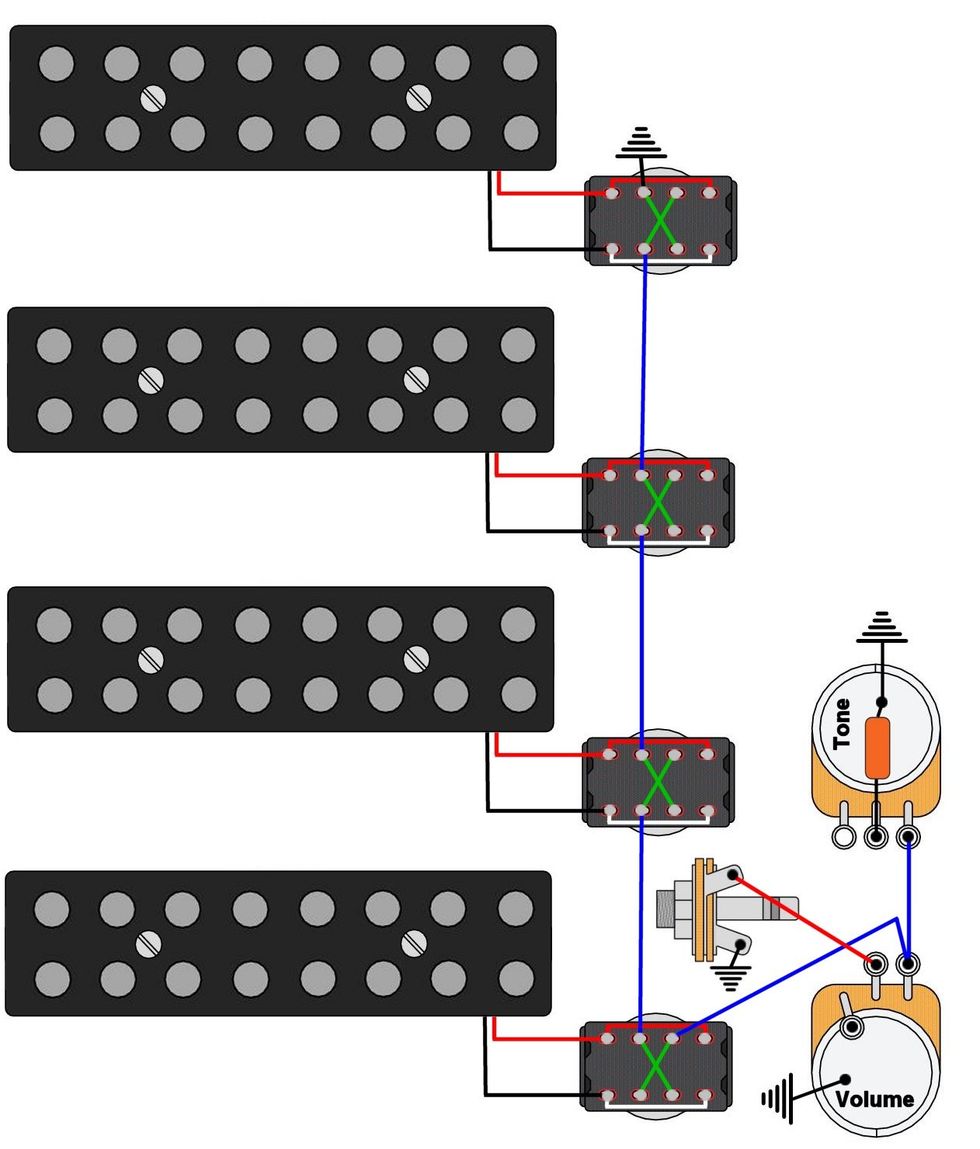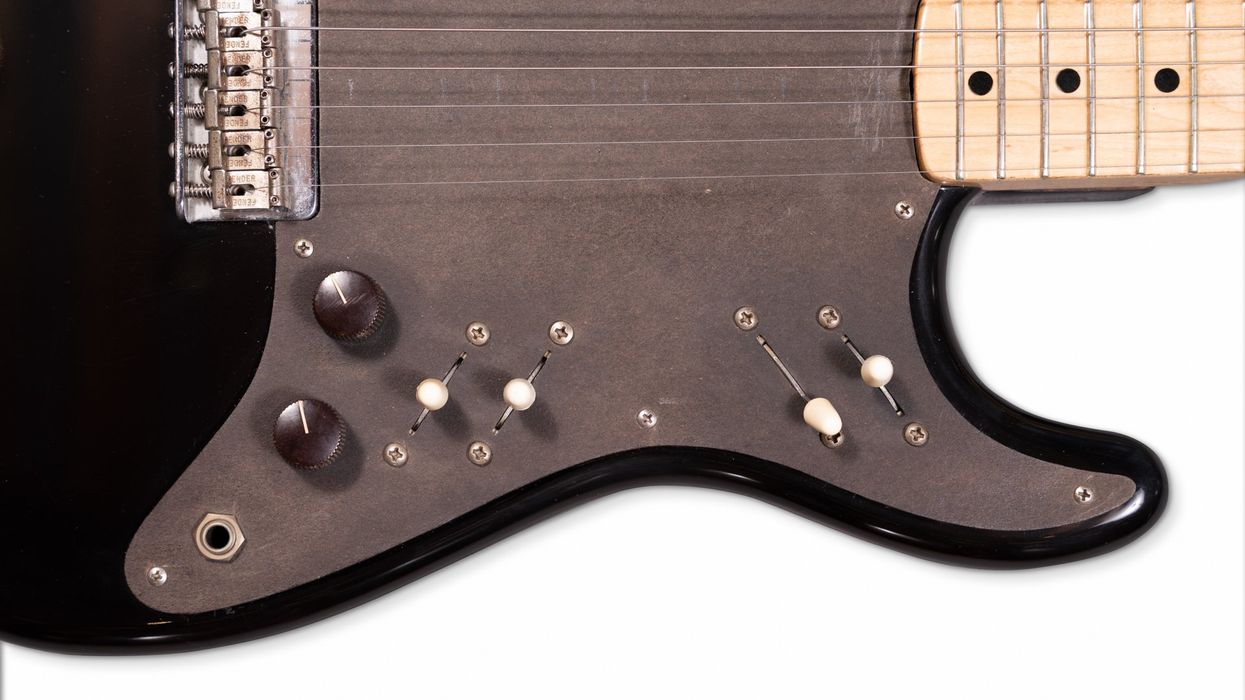Hello and welcome back to Mod Garage. This month, we will have a look at the most weird and elusive Fender guitar ever: the Marauder. We will not only cover some really interesting technical details, but also its history.
I think it’s fair to say that the Fender Marauder, like Gibson’s Moderne, was ahead of its time, and neither guitar made it beyond the prototype stage—at least not as originally designed.
The Marauder’s ’60s production model came with three pickups in a Jaguar-style body, many rocker switches, German carve headstock, and some even with slanted frets. It was later offered as part of the Modern Player series as well as through the custom shop. But the original design and concept of the Marauder was quite different.
In order to see what Leo Fender cooked up in the mid ’60s, we will have to take a short journey back in time, firing up the flux capacitor in our DeLorean with 1.21 gigawatts of energy. Our destination is the Fender factory in California, somewhere between 1963 and 1964—the early beginnings of the space age. The United States worked on the Apollo program at the same time the former Soviet Union worked on the Luna program on the other end of the world. Europe was busy developing and building the Concorde, and Leo Fender, sitting on the porch of his home in Orange County, was ready for his next stroke of genius.
Today, “less is more” is a common approach, not only in the guitar industry. But back then, it was “more is more” and “the more, the merrier.” Leo Fender offered the Esquire with one bridge pickup, and the two-pickup Esquire/Telecaster followed soon after. The next step was the Stratocaster with three pickups, which was mostly influenced by Bill Carson, one of Leo’s favorite guitarist guinea pigs in the ’50s. The next logical step was a guitar with four pickups, and that was exactly the idea behind the Marauder project. There are other guitars with four pickups, like the Japanese-made Teisco/Kawai EG-4T (nicknamed the “Hertiecaster”), or the Italian-made Welson Kinton, Galanti Grand Prix V4, and Eko 500/4V. But Leo Fender went the extra mile with his Marauder concept and installed the pickups underneath the pickguard for a very sleek aesthetic.
“The next logical step was a guitar with four pickups.”
Let’s have a look under the hood: The patent for the Marauder was filed March 6, 1964, and granted December 6, 1966—US patent #3290424—so we can say that developing and prototyping probably started somewhere in 1963. In addition to the four pickups under the pickguard, the original Marauder had a 3-way switch for each of the pickups, plus a Telecaster-style master volume/master tone configuration. On the patent, you can clearly see that the guitar was planned as an offset-type like the Jazzmaster or Jaguar using the same hardware.
There was, however, a one-off prototype built around a Stratocaster that has a dedicated 3-way lever pickup selector switch from the Telecaster and Stratocaster (the 5-way switch was not yet invented then) for each pickup, which looks really weird.
The Pickups
The pickups in the Marauder were designed by a man named Quilla “Porky” Freeman, a Western-swing musician and tinkerer based in Missouri. These large, slightly offset experimental pickups featured a dozen pole pieces and deep armatures, which helped give it a percussive tone. To compensate for the distance from the strings, the pickups were overwound. The patent document clearly states that all four pickups had the same winding direction (phase), but different magnetic polarity. The first (bridge) and the third pickup had south polarity, while the second and fourth (neck) pickup had north polarity, which was a clever move. This was the start of what is known as a “stealth pickup” today, often used as the hidden neck pickup on an Esquire. For such a construction, it’s important that the pickguard material is non-magnetic.
The Switching Matrix
Each of the pickups is connected to its own 3-way on-off-on switch, allowing the corresponding pickup to be on, off, or on with reversed phase, resulting in a total of 48 different sounds between the four. If the idea of these 3-way pickup selector switches sounds familiar, that’s because this is the basic design of Brian May’s “Red Special” guitar that he built with his father Harold in 1963. While that’s the same time frame, it’s close to impossible that Leo Fender knew what Brian May was doing in the U.K., so two geniuses simply had the same idea at the same time.
Here we go with the wiring: The four toggle switches are double-pole on-off-on types, volume and tone are 250k audio, and the tone cap is a 0.05 uF type. To keep the diagram clean, I substituted all ground connections with the international symbol for ground.

Illustration courtesy of Singlecoil
That’s it! Next month, we will talk about a very cool and clever way to integrate a variable dummy-coil into a guitar, so stay tuned.
Until then… keep on modding!











































